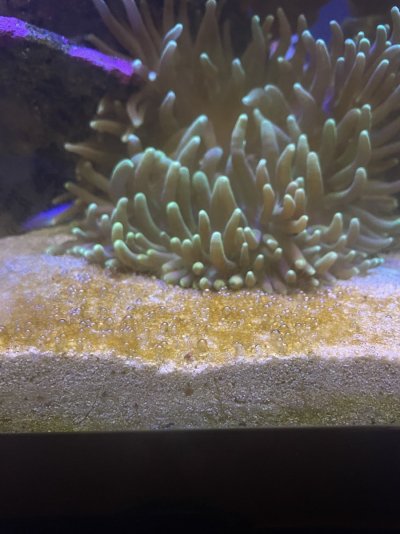I’m hoping someone can identify this horrible algae I keep getting on a daily basis, my parameters are stable for once as I was battling high nitrates and phosphate, nitrates now are 5-10 and phos is 0.05 with the help of an algae scrubber I made, the tank is about two years old and it’s a mix of corals, 2 clowns and 2 tangs and a couple of snails. Is this algae bloom dinos or diatoms.




















